
David Antin memorial at Getty
February 3, 2016
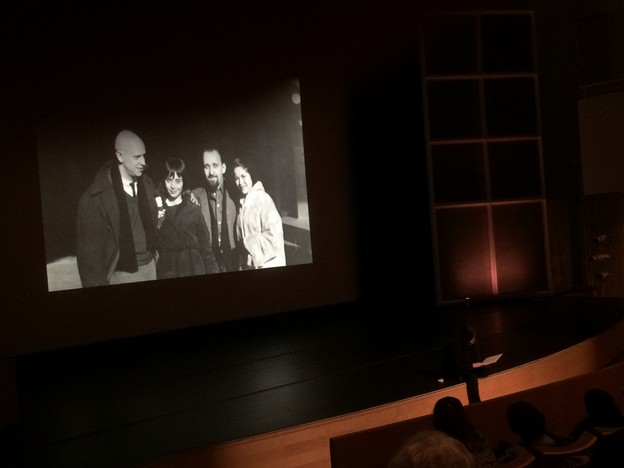

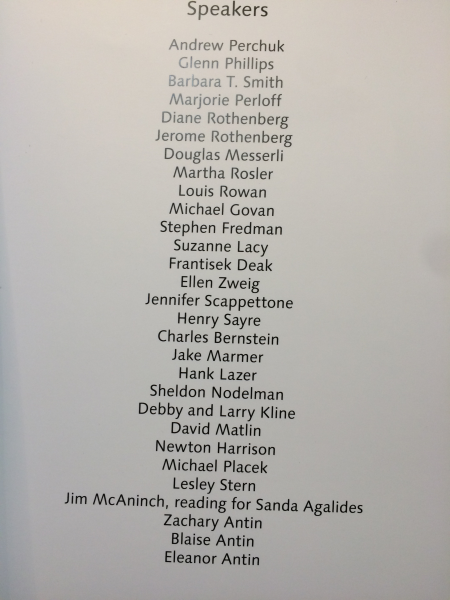
My obituary for David Antin was printed on the inside cover of the memorial program:
David Antin was one of the great American poets of the postwar period, transforming the practice of poetry, art criticism, and the essay. His “talk poems” are chock full of startlingly philosophical insights, weaving narratives on the fly and making poems that are as engaging as they are wise.
David Antin was born in Brooklyn on February 1, 1932. His father died two years later. He went to Brooklyn Technical High School, where he imagined becoming an inventor, engineer, or scientist. In his own way, Antin became all three. While at Tech, he read Stein and Joyce; that changed everything. In 1961, he married the multimedia artist Eleanor Fineman (now Eleanor Antin). In 1968, David and Ellie, with their one-year-old son Blaise, moved to San Diego to teach at the University of California at San Diego, where David co-founded the visual arts program.
Through his work as a performance artist and conceptualist, and his commitment to process and improvisation, Antin transformed the genre of poetry. Best known for his signature “talk poems,” performed and translated around the world, Antin has published more than fifteen books.
Antin died on October 11, 2016. He had been diagnosed with Parkinson’s disease, though, iconoclast to the end, he disputed the diagnosis.
An inspiration to both his contemporaries and younger poets, Antin challenged us all to think on our feet and in the vernacular. A thrilling conversationalist, Antin’s voice echoes in and through time. He is gone, but his talk lingers on.
•••
For my talk, I made a commentary on this statement, adding to it and contradicting it, based on notes I made during the first part of the program. I came to the event not knowing what I would say. Among the first speakers was Barbara T. Smith, who asked each of us to cut a lock of hair, which she collected. This reminded me of the Jewish ritual of cutting a piece of clothing at a funeral, usually a tie. So I ended my talk with a reading of “Rivulets of the Dead Jew,” which makes a reference to this ritual. I gave my annotated program to Jake Marmer, who immediately followed me. Jake told us how David had talked to him about poems his grandfather read to him in Russian: Jake gave a stirring reading of one of those poems in Russian (without translation, none needed). He posted my notes:
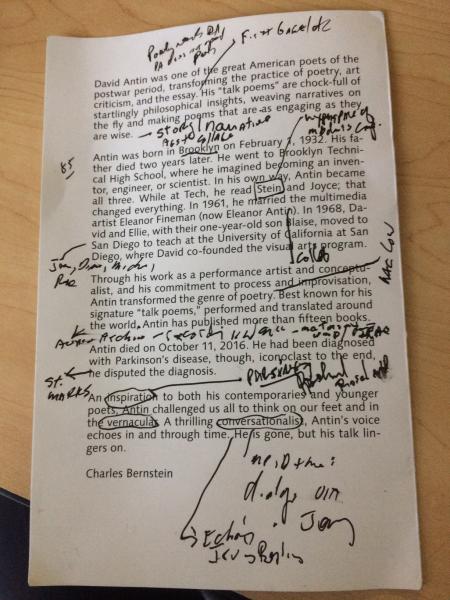
A few days before David died, I gave the closing talk for the Outsiders/Insiders conference in Glasgow, appearing after Jerry Rothenberg. (Nicole Peryafitte’s video is here.) In that talk I adapted one of David’s more famous quips. Nick Thurston recast my remark for this elegy that Nick designed:
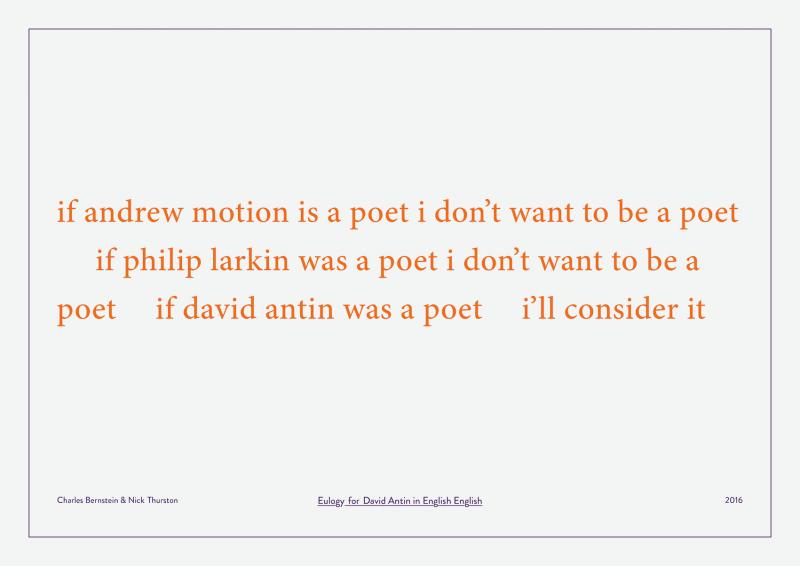
David and I spent months on this conversation; PDF is available at the Antin EPC page. David’s conversation with my students at Penn, done as a Close Listening show, is available at his PennSound page.
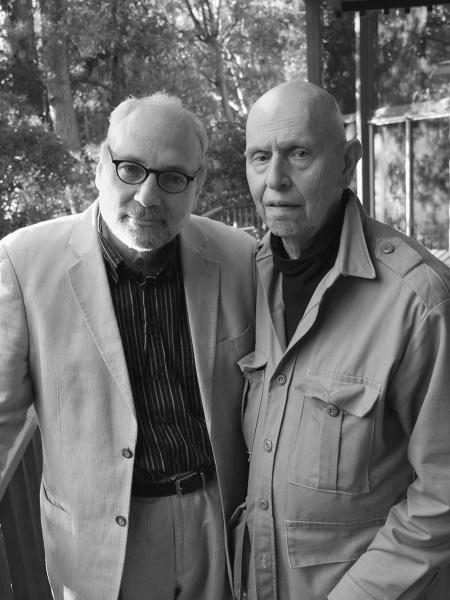
Photo: ©Alan Thomas, 2011
David Antin Video Portrait by Charles Bernstein
February 18, 2008 (Portraits series 9)
Antin in the Sky with Diamonds
(“I do the best I can”)
David and I met for lunch in SoH0, near Ellie’s gallery. Much of our conversation focused on David’s essay collection; there were enough works for two books, so which to leave out? David was never much interested in talking about collecting his essays; his focus was always on what he was doing now, what he was doing next. That’s partly why it took him so long to gather together the pieces in that book. But I was persistent and brought up the essay collection just about every time we met. After a while, we walked outside and wound our way, slowly, toward Houston, talking all the while. I asked David about his sky-writing poems.
